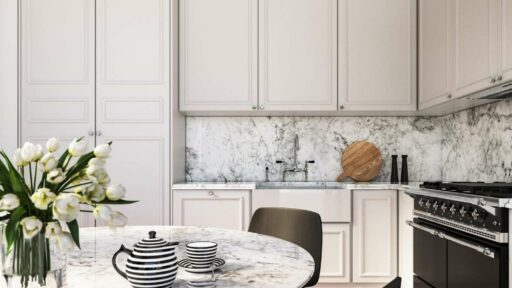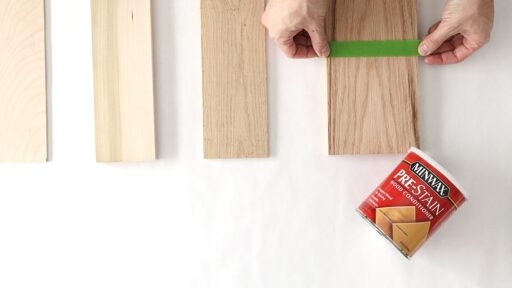Many homeowners feel frustrated when their living spaces don’t feel as comfortable as they should. Rooms feel a little too warm, too cold, too dark, or simply not inviting. People often assume they need major renovations to solve these issues, but most comfort problems come from small things. Simple changes can make your home feel better without tearing down walls or spending too much. These changes help you enjoy your home more and reduce everyday stress. You can also adjust them over time to fit your routine, family needs, or lifestyle.
Comfort often comes from how well a home supports daily life. If a room feels stuffy or cluttered, it gets uncomfortable fast. If lighting feels harsh or uneven, it affects mood and energy levels. Most homes have these small problems, and they add up. The good news is that you can fix many of them with quick updates. These updates are easy to apply, and they do not require special tools or advanced skills.
This article covers simple ways to improve airflow, lighting, storage, noise levels, and more.
Handling Small Repairs Before They Interrupt Comfort
Small repairs matter. Loose door handles, squeaky hinges, and sticking drawers disrupt comfort throughout the day. Many of these issues come from wear and tear. You can fix most of them with basic tools. A few minutes of attention keep these problems from getting worse. However, some repairs need trained help. For example, if a garage door stops working or becomes loud, it is safer to call professionals who offer residential and commercial garage door repair services. Addressing small issues early helps your home stay safe and functional. This approach prevents minor problems from turning into stressful situations.
Improving Airflow with Simple Adjustments
Good airflow helps a home feel fresh and stable. Many homes feel warm in some areas and cool in others because air cannot move well. You can fix this by checking how vents, fans, and filters work in each room. If furniture covers a vent, air gets stuck in that area. Moving chairs, sofas, or shelves helps the air move through the room.
You can also clean vents and replace filters on a regular schedule. Dust and buildup block airflow and make rooms feel heavy. Ceiling fans help too, but they work best when the blades stay clean. When fans and vents stay clear, the air in your home moves smoothly. This creates a more even temperature and a much more comfortable space.
Using Lighting to Create a Better Atmosphere
Lighting changes how a room feels and functions. Many homes use bright, harsh bulbs that make spaces feel tense or cold. You can improve comfort by switching to softer, warmer bulbs. This small step changes the mood of a room right away.
Task lighting helps as well. A simple lamp near a reading spot or a small light under a cabinet in the kitchen makes tasks easier. These lights guide your eyes and reduce strain. When each space has lighting that fits its purpose, the room feels more balanced throughout the day. You don’t need wiring work to make these changes. You only need the right bulbs and a few small lamps.
Organizing Areas That Feel Overwhelming
Clutter makes any room feel uncomfortable, even if the items seem small. When surfaces fill up, the room feels crowded. You can fix this by organizing one area at a time. Choose simple storage tools like bins, baskets, wall hooks, or shelf dividers. These tools help everything stay in the right place.
You don’t need to buy expensive storage systems. The goal is to remove pressure from the room. When everything has a spot, the space feels open. You also move through the room more easily. This reduces stress and creates a home that supports your daily routine.
Adding Soft Elements to Reduce Noise
Noise affects comfort more than many people realize. Hard surfaces make sounds bounce around. This creates echoes and sharp noise in busy areas. Adding simple soft elements helps. Rugs, curtains, and fabric cushions absorb sound. They keep noise from spreading through the room.
These items fit in most spaces and do not require installation work. You can place a rug in a hallway, add curtains to a living room, or add soft cushions to a sitting area. Each item reduces noise in its own way. When noise softens, rooms feel calmer and more pleasant to spend time in.
Upgrading Small Fixtures for Better Everyday Use
Small fixtures influence comfort more than many people expect. Old faucets, showerheads, and cabinet handles often become stiff or worn after years of use. When these parts stop working well, daily tasks take more effort. You can improve comfort by replacing them with updated options that work smoothly. Modern showerheads offer better control over water flow. New faucets often use simple lever handles that feel easier to adjust. Cabinet handles with rounded edges feel better to grip and reduce strain on hands. These small upgrades help daily routines run with less effort. They also make older spaces feel refreshed without major changes.
Using Simple Tools to Improve Temperature Control
Temperature plays a key role in home comfort. You can manage heat and cold better with a few simple tools. Blackout curtains help block sunlight during warm months. Insulated curtains help keep heat inside during cooler months. Both options make rooms feel more stable throughout the day. Draft stoppers placed at the bottom of doors keep outside air from shifting indoor temperatures. You can also use basic timers to control fans or small heaters. These tools help you keep each room at a steady temperature without adjusting the thermostat too often. They give you more control without adding extra costs or installing new systems.
Creating a Layout That Encourages Easy Movement
The way furniture sits in a room affects comfort. Tight spaces make movement difficult. Overcrowded layouts interrupt natural paths through the home. You can create a better layout by moving furniture to open up walking space. Start by removing items that serve no clear purpose. Many homes hold pieces that take space but don’t add value. Once you clear the room, arrange the main seating and tables so people can move without stepping around edges or corners. Leave space near windows to let light in. A layout that supports movement reduces stress and makes rooms easier to use throughout the day.
Comfort does not depend on large projects. It comes from spaces that support daily routines and feel easy to live in. Simple updates make this possible. Better airflow, improved lighting, small repairs, and thoughtful layouts can change how a home feels. These changes do not require major construction or large budgets. They only need a bit of attention and steady upkeep. When you focus on these small steps, your home becomes more inviting and easier to enjoy. Over time, these improvements help you create a space that feels balanced and comfortable without major work or disruption.








